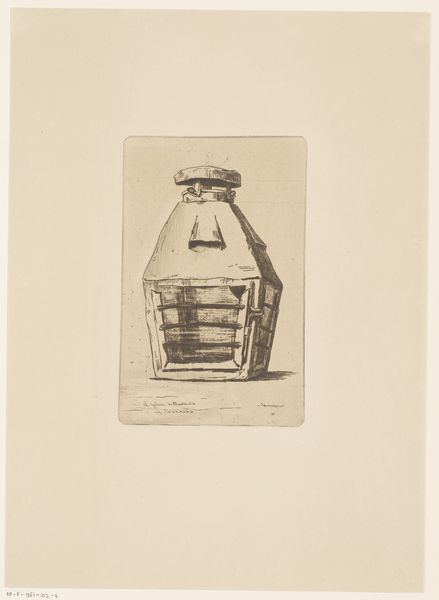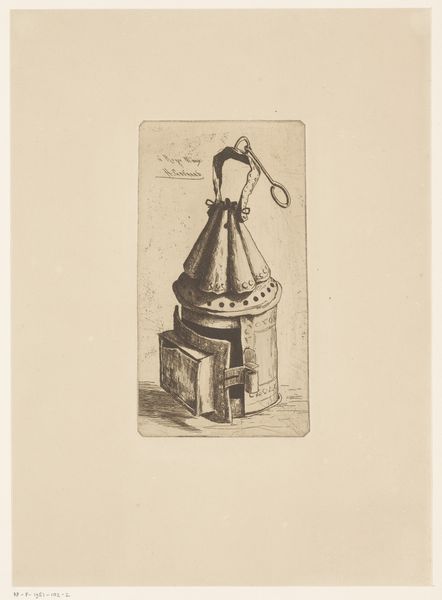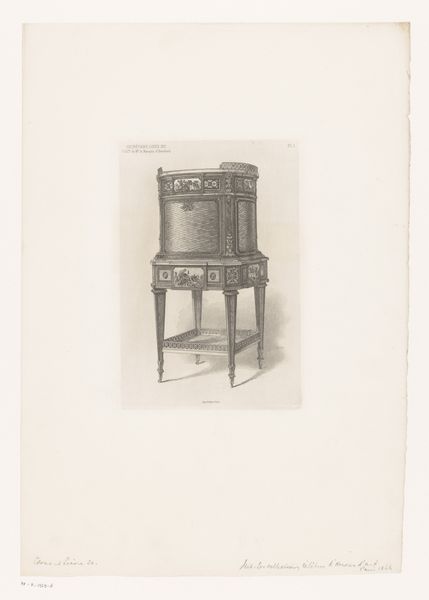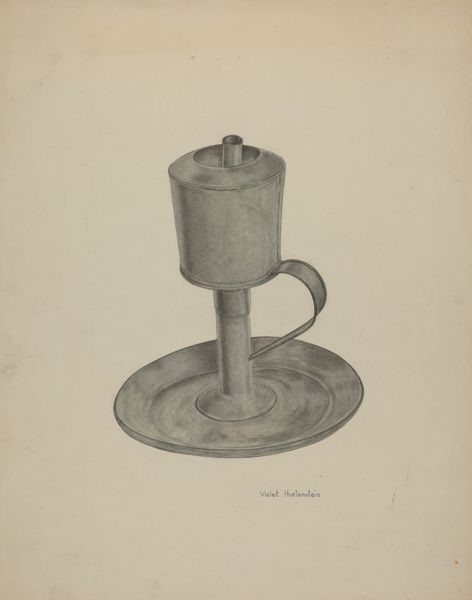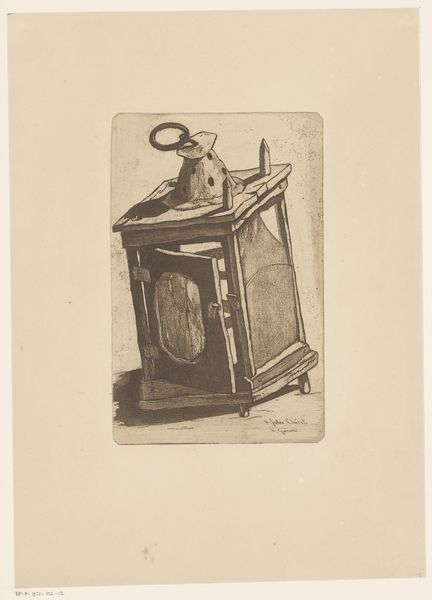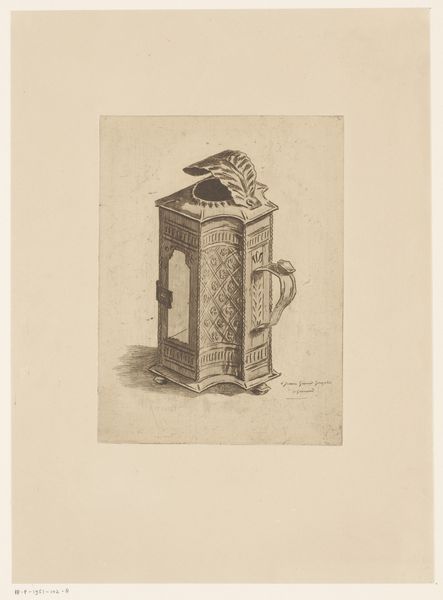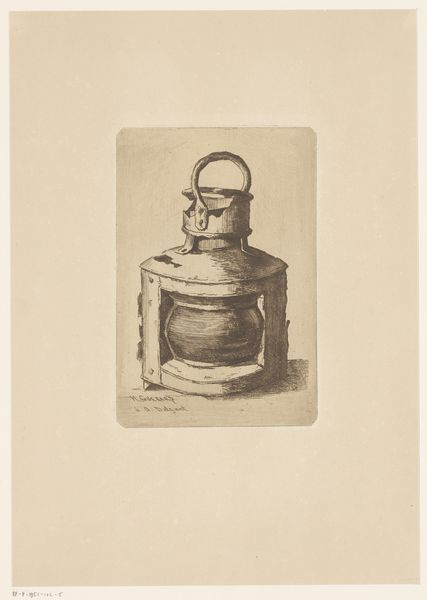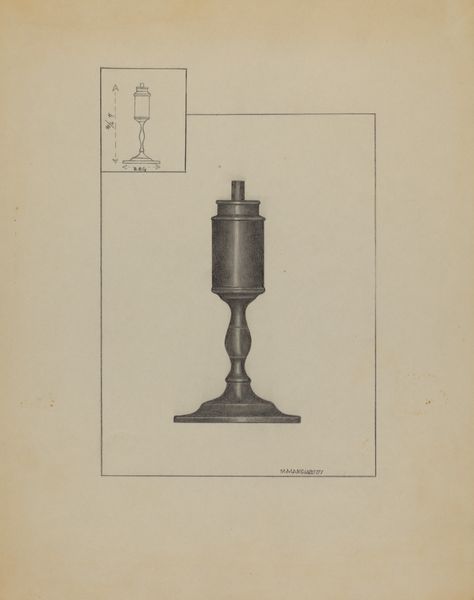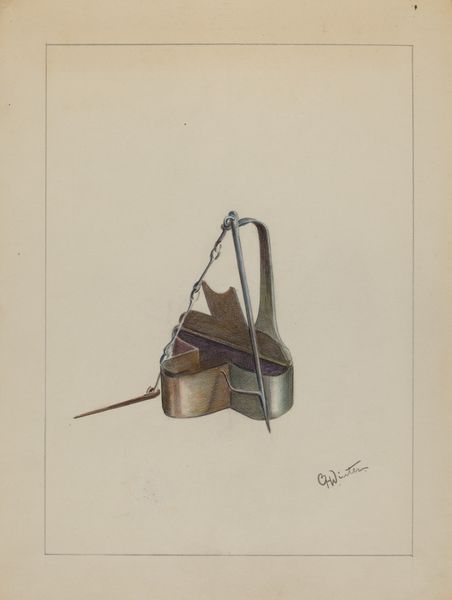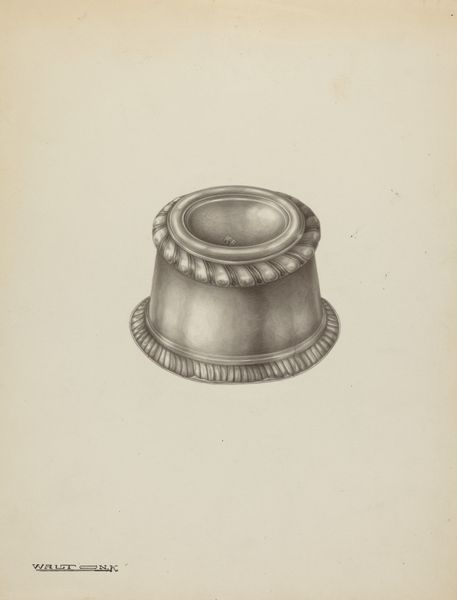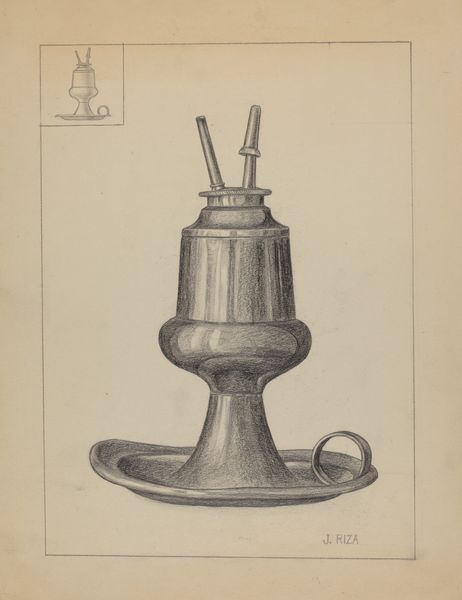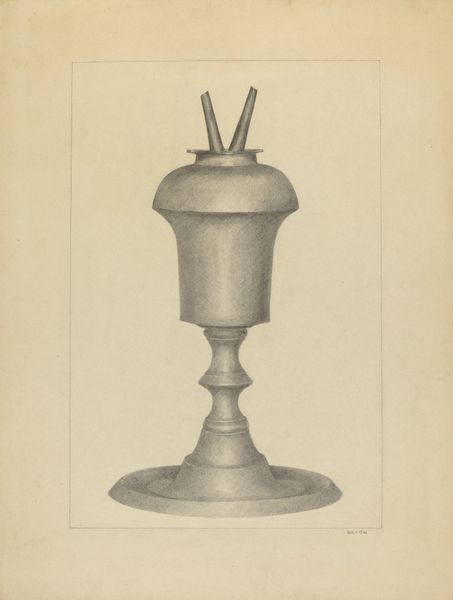
drawing, print, etching, engraving
#
drawing
# print
#
etching
#
old engraving style
#
geometric
#
line
#
engraving
Dimensions: height 200 mm, width 135 mm
Copyright: Rijks Museum: Open Domain
Editor: So, we're looking at "Lantaarn," created by Henri-Charles Guérard in 1876. It’s an etching and engraving on paper. I'm immediately struck by how detailed it is, especially considering it's just a lantern! What do you see when you look at this print? Curator: It's fascinating to consider the socio-economic context of this seemingly simple object. What kind of labor was involved in producing both the physical lantern itself and the print? How did advancements in metalworking and printmaking technologies influence the availability and design of lanterns for both the wealthy and the working classes? Editor: That's a perspective I hadn't considered. I was focusing more on the artistic skill involved in creating such a precise rendering. So, the availability of materials impacted this imagery? Curator: Precisely. Guérard's choice to depict this particular lantern becomes more meaningful when we examine the materiality of light and shadow. Etching and engraving were labor-intensive processes. How does that labor relate to the functional purpose of a lantern—to illuminate? It becomes less about art for art's sake, and more a social document. Editor: That's such a shift in perspective for me. Thinking about the access to light…almost a commentary by Guérard? Curator: Perhaps, and considering its date, right in the middle of a huge growth period for the availability and use of electricity for lighting; you might ask, “What’s at stake, here?”. Are we really just looking at an isolated aesthetic exercise, or are the labor, skill, time, expense, production process and choices of imagery a commentary on labor or social issues in the Gilded Age? Editor: I’ll never look at an old print the same way again! I was so focused on the technique, but you've made me realize the image is more of a historical and social document that can give us insight into the daily experience of labor and consumerism.
Comments
No comments
Be the first to comment and join the conversation on the ultimate creative platform.
